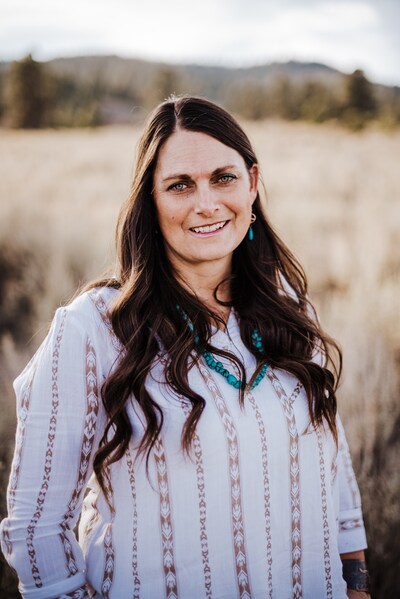Despite record-high retail beef prices, U.S. beef demand remains strong, with sales growth outpacing volume in 2024. Oregon producer and Cattlemen's Beef Board member Wendy Bingham highlights how Beef Checkoff-funded promotion, research and education help sustain consumer trust and keep beef at the center of the plate.
DENVER, Oct. 1, 2025 /PRNewswire-PRWeb/ --
Despite tight cattle supplies and record-high retail prices, beef demand continues to show resilience, according to recent industry data. In 2024, fresh beef retail sales value rose nearly 9.7% while pounds sold increased 4.5%. The USDA had projected per-capita beef availability in 2025 to hold near 58.5 pounds, only slightly lower than 2024. At the same time, retail beef prices recently averaged more than $8 per pound, yet consumers continue to choose beef at the center of their plates.
"Those numbers don't happen by accident," said Wendy Bingham, a North Powder, Oregon beef producer and member of the Cattlemen's Beef Board (CBB), which oversees and administers the national Beef Checkoff program. Bingham also sits on the Beef Checkoff's Domestic Marketing Committee. "They're the result of steady Beef Checkoff investment in promotion, research and education that keeps beef top of mind for consumers and builds the trust that sustains demand."
Bingham and her husband operate Bingham Beef, a direct-to-consumer business they launched in 2019 after recognizing unmet demand in their area. Today, the business sells everything from beef shares to individual cuts, serving a loyal local base and reaching additional customers online. "Selling direct gives me a front-row seat to beef demand," Bingham said. "Customers are asking for more variety of cuts, they're loyal to the quality of beef, and they keep coming back—even when prices rise. That tells me demand is strong."
The Beef Checkoff, established in 1985, funds programs designed to increase demand for beef through research, promotion, education and innovation. The Beef. It's What's For Dinner. brand helps consumers connect emotionally with beef, while programs like Beef Quality Assurance (BQA) improve production practices and show consumers that producers care about quality and safety.
"As ranchers, we're excellent at producing top-quality beef," Bingham added. "But producing it isn't enough. Consumers need to know why they should choose beef—and that's what the Checkoff delivers. Even when food prices rise, I see customers staying loyal to beef. That's demand in action, and it's what the Checkoff strives to sustain."
While some producers may wonder whether they see returns from their Checkoff investments, Bingham encourages her peers to look at the broader picture. "It can be hard to connect a national ad campaign or a nutrition study to the check you get for your calves," she said. "But those efforts are working every day to keep beef in the spotlight and ensure consumers continue to choose it over other proteins."
Despite higher costs and limited supplies, beef's place at the center of the American plate remains secure. "Even with prices climbing, consumers aren't walking away from beef," Bingham said. "That kind of stability proves the Checkoff's value in driving demand for the product we work so hard to raise."
About the Beef Checkoff
The Beef Checkoff Program was established as part of the 1985 Farm Bill. Producers and importers pay $1 per head on cattle sold in the U.S. and an equivalent amount on imported cattle, beef and beef products. The Cattlemen's Beef Board (CBB) oversees collection and spending of Checkoff funds, which are invested in research, promotion, education and innovation to drive demand for beef.
Media Contact
Lynette Von Minden, Cattlemen's Beef Board, 1 402-437-6457, [email protected], DrivingDemandForBeef.com
SOURCE Cattlemen's Beef Board





Share this article